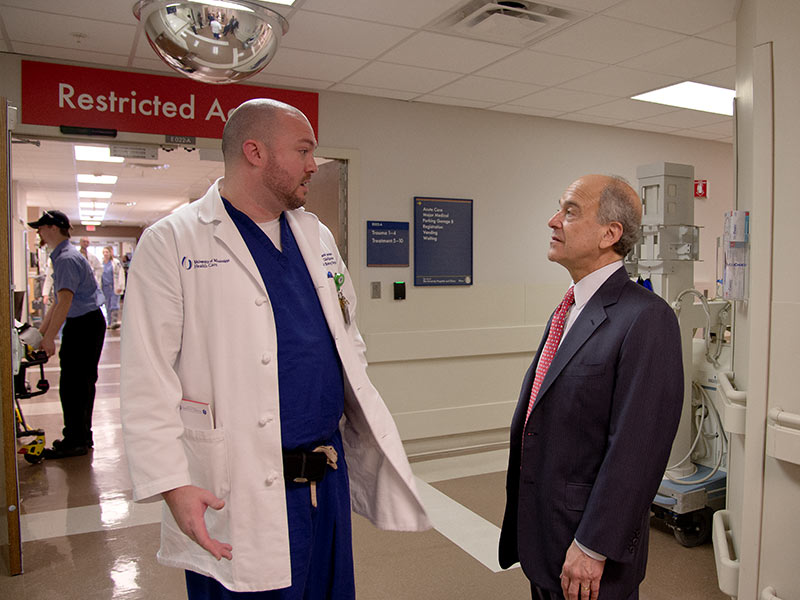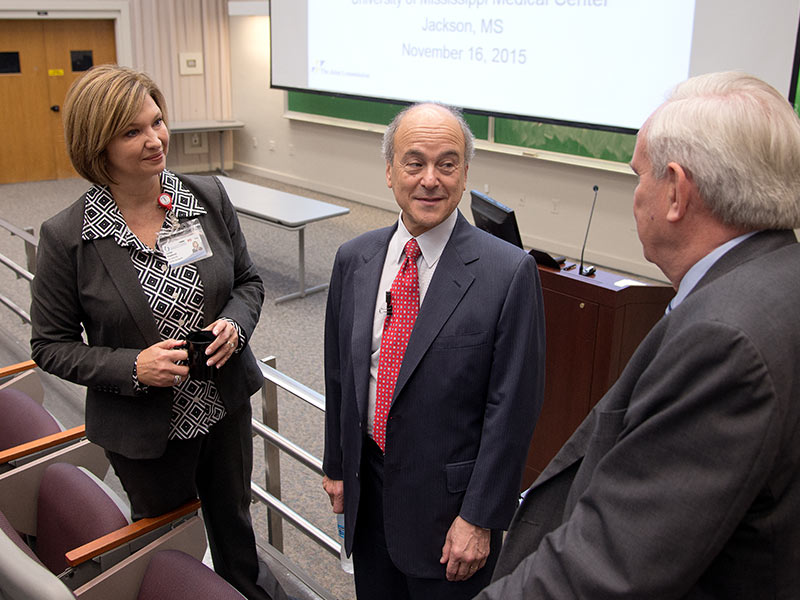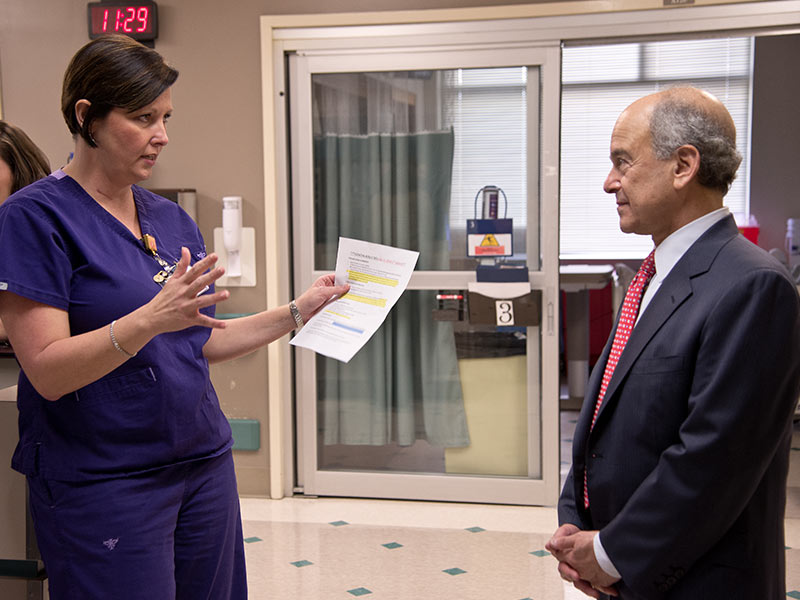Safety, quality central to Joint Commission chief's visit

The man who heads the nation’s leading accrediting body for health care is making a second visit this month to the University of Mississippi Medical Center.
The June 18 stop for Dr. Mark Chassin, president and CEO of The Joint Commission, is part of the journey he is walking with the Medical Center as UMMC strives to eliminate serious safety events that impact patients, and takes a team approach to cultivating safer, more effective care.
Chassin last visited the Medical Center in November 2015 at the invitation of Dr. Michael Henderson, UMMC’s chief medical officer. Chassin will give a talk entitled “High Reliability Organizations: This is Robust Process Improvement” from 9-10 a.m. in Amphitheater R153.
Chassin also leads the Joint Commission Center for Transforming Healthcare. Its mission: Turn health care into a high reliability industry by developing effective solutions to health care’s most critical safety and quality problems. High reliability hospitals consistently give all patients quality, safe care.
Organizations can achieve that gold standard through improving their effectiveness, efficiency, customer satisfaction, compliance, culture and documentation. “Dr. Chassin is interested in coming back here because we’ve been pushing the high reliability concept throughout the Medical Center,” said Henderson, a transplant surgeon and hospital performance expert who came to the Medical Center in early 2015.
That year, quality improvement became UMMC’s top strategic priority.
“High reliability organizations are all about operating under hazardous conditions, with little margin for error without serious consequences, yet maintaining high levels of safety and quality,” said Dr. Charles O’Mara, professor of surgery and associate vice chancellor for clinical affairs.

Chassin last visited the Medical Center to discuss the need for quality improvement and error prevention at all hospitals. Chassin toured University Hospital, including the Emergency Department, and spoke during Grand Rounds about high reliability in health care.
“It was an important kickoff to the real work we were doing in the quality and safety arena,” Henderson said.
On that visit, Chassin posed this question: If someone on a transplant surgical team noticed that a patient's healthy left kidney was about to be removed instead of the diseased kidney on the right, should catching such a close call be considered a victory?
“Someone saved the day, but let's not celebrate too hard,” Chassin told his audience.
“Not many academic medical centers do this,” Henderson said of the Medical Center’s quest to become a high reliability organization. Chassin is visiting “to see how it’s working in our environment.”
Being a high reliability organization in health care “translates into many good things, like excellent treatment outcomes, satisfied patients, minimizing unnecessary waiting, easy access to care, cost savings, and an organizational culture that always thinks about safety and is always trying to improve,” said O’Mara, who’s leading that effort. “Applying the principles of high reliability to any health care organization requires a thoughtful and carefully executed plan.”

Much progress has been made at the Medical Center since Chassin’s visit. That includes:
- The Center for Transforming Healthcare assessed the Medical Center in partnership with UMMC’s senior leadership in spring 2016 and summer 2017. In early December 2017, The Joint Commission surveyed UMMC. It visits most U.S. hospitals every three years.
“We had an excellent survey,” Henderson said. “They always identify places where you can continue to improve, and we are working hard on those.”
- The Medical Center’s leadership has taken more of an active role in changing UMMC’s culture to one of safety and transparency. That’s seen in ways that include creation of the Clinical Intranet, which breaks down to the patient floor level how well the Medical Center is doing on safety and quality; and creation of a public Clinical Quality link on the UMMC website that gives the same information on quality measures.
- In March 2018, the quality team in Henderson’s office launched “Chasing Zero,” a new initiative that strives to eliminate serious safety events impacting patients and to cultivate safer, more effective care. The proactive approach was unveiled to employees during several talking sessions led by quality improvement and performance staff.
That initiative is modeled after “Zero Patient Harm is Achievable,” an effort championed by The Joint Commission. “We decided to do that here before I realized that it’s The Joint Commission’s big emphasis this year,” Henderson said.
- Henderson’s office initiated leadership rounds, periodic tours of hospital floors by administrators and managers to get feedback from front-line caregivers on safety performance. The rounds are held at different times, night and day, weekends and regular workweek, so that all can take part.
“Dr. Chassin’s visit to our organization demonstrates our continued commitment to, and investment in, ensuring the highest quality care and services for those we serve,” said Elizabeth Youngblood, CEO of adult hospitals and metro-area clinics.
“Changing to a culture of safety takes time, but I see this happening now,” Henderson said. “So much of this is about choosing the right time to take the next steps.”


